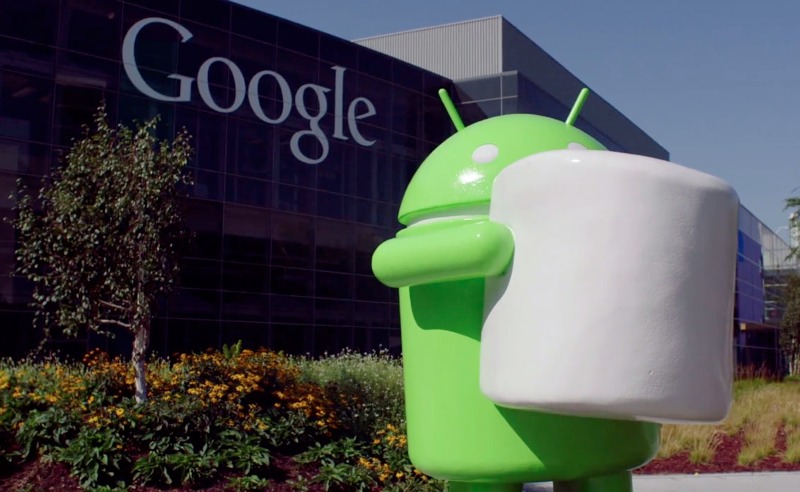 NEWS
NEWS
 NEWS
NEWS
 NEWS
NEWS
Google officially revealed Monday that its next version of Android (version 6.0) will be known as Android Marshmallow.
As we’ve covered previously, the new version is includes native fingerprint support (fingerprint support on Android devices is currently offered by third party software), as well as the new “Doze” power saving mode and a new permissions model that lets you choose which functions you want to allow an app access to.
Android Pay, Google’s new competitor to similar services from Apple and Samsung Electronics Co. Ltd., will also make its debut with the new version of the operating system.
It all sounds great in theory, and while a new version of Android complete with extra bells and whistles is always welcome, there’s one serious problem: hardly anyone with an existing Android phone will ever get to use it.
The great strength of Android is also its greatest weakness: because it’s open source any company can take the code and adapt it to its own hardware, delivering the rich variety of devices that Android users are able to purchase versus the sheep who buy Apple powered products, but that very same variety means that unlike iOS powered devices, Android-powered devices rely on the manufacturer to update the operating system, and the reality is that it rarely happens.
To put it more crudely, the Android update process is f**ked.
Android Lollipop (5.x) was released in October 2014 yet as of August 2015 it currently holds a mere 15.5 percent of all active Android installs. Kitkat (Android 4.4) holds the largest share at 39.3 percent while earlier versions of Android 4.x hold some 37.7 percent of active Android device usage. The rest consists of the nearly now archaic Android 2.x releases at 4.9 percent.
To be fair Android phones still running version 2.x are unlikely to offer the hardware that would support later versions of Android, but many of those phones running 4.x versions do but have never been upgraded.
Why? because many companies who release phones either never offer, or later abandon offering Android updates as they move onto new models that offer later versions; there’s no value proposition for a manufacturer to continue to offer updates as there is no financial incentive for them to do so.
Google has recognized this problem in part, and its Android One program targets lower end phone manufacturers by assisting them with the basics of the phone design in return for more control over the Android install, but that’s limited only to lower end Android smartphones in developing markets and does nothing significant to address the issue across the broader Android marketplace.
While a counter argument may be that users of earlier versions of Android may be more than happy with their devices, the other problem with the broken upgrade model is one of security: without updates to Android installs phones simply aren’t being patched against security risks, and given its open source nature the operating system has been exposed to more threats than Apple’s iOS has been, although noting that the latter still has been targeted extensively.
Apple is simply able to pump out an update to iPhone and iPad users when vulnerabilities are exposed, versus Google who must currently simply rely on the multitude of vendors to act in good faith and provide users with the updates to make sure their phones are safe; bigger players such as Samsung, HTC, Motorola and others usually do, but far many others never bother.
The exception, of course, is with Google’s own range of Nexus branded phones where it controls the updates, but while Android purists adore the range of Nexus phones, their overall market share is single figures, making little to no difference to the overall problem.
There’s no apparent easy solution for Google and Android in what is a serious issue that will only continue to get worse with time as Google continues to release new versions of Android and device manufacturers continue to fail to provide upgrades to their users.
Google can’t force manufacturers to come to the party in terms of upgrades no more than it can force manufacturers to stop skinning their Android installs with their own custom user interfaces and software as Android remains open source and free to use; sure, they can withhold approval for the installation of Google apps which they hold the copyright to in an effort to encourage manufacturers to come to the table, but likewise the whole point of Android to begin with was getting Google apps out to as many people as possible, something, with credit to the company, has worked extremely well.
It may be safe to say that with no solution available, the current divergence of Android version installs is only going to continue to grow worse, with the security issues, let alone pain to developers this will continue to cause, and with time may even come to damage the the Android brand and its public perceptions.
If you can think of a way Google can fix this problem, leave a comment on the post (hover left of text, hit the + box that appears to do so).
Support our mission to keep content open and free by engaging with theCUBE community. Join theCUBE’s Alumni Trust Network, where technology leaders connect, share intelligence and create opportunities.
Founded by tech visionaries John Furrier and Dave Vellante, SiliconANGLE Media has built a dynamic ecosystem of industry-leading digital media brands that reach 15+ million elite tech professionals. Our new proprietary theCUBE AI Video Cloud is breaking ground in audience interaction, leveraging theCUBEai.com neural network to help technology companies make data-driven decisions and stay at the forefront of industry conversations.